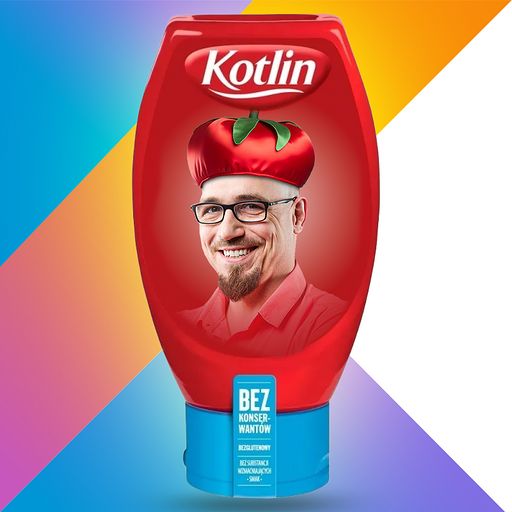Benefits of Using Compose Multiplatform for Mobile Applications
 Michał Konkel
Michał Konkel
Compose Multiplatform – The Future of Mobile Apps or Just Another Experiment?
Over the years, many cross-platform solutions have emerged, trying to bridge the gap between costly native app development and the more affordable method of creating two applications from one codebase. I’ve worked with several of them - Cordova, Xamarin, React Native, and more recently, Flutter. While each has its benefits, they all seem to miss something important.
One of the main drawbacks that has discouraged me from using these technologies for enterprise projects is the lack of an easy exit strategy. If you choose to move away from something like React Native (due to limitation or a pivot) to native development, the switch can be very costly. You have to change your company’s skill set, hire new developers, or outsource teams, and the whole development process needs to start over from the beginning.
After months or even years of work, you might find yourself with nothing and have to rebuild your project from scratch. That's probably why some Cordova-based projects still exist, even though maintaining them is very difficult. Similarly, there are .NET developers who need to support and expand Xamarin applications, even though Microsoft has moved on to a different approach.
So, How Is Compose Multiplatform Different? Why Isn’t It Doomed to Fail?
Because it’s natively integrated from an Android development perspective. Regardless of whether you use Compose Multiplatform (CMP) or “pure” Android development, you’re still writing in Kotlin - Google’s officially recommended language for Android apps.
Furthermore, Jetpack Compose is the designated UI framework for Android, meaning that whether you go with native Android or CMP, your screens are built in the same way. From a pragmatic perspective, there’s no difference.
With CMP, Android remains fully native, while iOS becomes the hybrid part. This is a completely different approach compared to other cross-platform solutions. With Flutter or React Native, both platforms are developed outside their “natural environments”, using a non-native language for each. This inevitably leads to compromises and imperfections.
The Business Perspective – Why Does It Matter?
The most crucial factor in modern product development is validation with real users. The key question is: How quickly can we deliver a working solution and determine if our app even makes sense?
A rapid MVP (Minimum Viable Product) can be the deciding factor in whether your project is a hit or a complete failure. With CMP, we get an almost fully native Android app, and from the same codebase, we generate an iOS app.
This strategic approach significantly reduces the development time required to build applications and speeds up the time to market. By doing so, we can reach our users more quickly, enabling us to gather valuable feedback and insights sooner. This feedback is essential for iterative improvements and ensuring that the app aligns with user expectations and demands. Ultimately, this accelerated process enhances our ability to adapt and refine our product, increasing the likelihood of success in a competitive market
The Best Part? There’s No Lock-In
If at any point you decide to move away from CMP and switch to fully native development, you already have a complete Android app ready to go. This means there's no need for any rewrites on the Android side, which can save a significant amount of time and resources. You would simply stop generating the iOS version through CMP and instead, focus on rewriting it natively using Swift and SwiftUI. This transition allows you to take full advantage of the native features and performance optimizations available on iOS.
Alternatively, you might find that CMP perfectly meets all your needs and expectations, proving to be an ideal solution for your business requirements. With CMP, development remains faster and more cost-effective compared to traditional mobile app development methods..
Native UI When It Matters
CMP does not prevent you from using native UI components (especially for iOS) when needed. By applying the Pareto principle (80/20 rule), which suggests that 20% of an app's features provide 80% of its value, you can strategically combine hybrid and native development approaches:
If your app’s dashboard needs to be visually stunning and highly interactive, consider building it natively. This allows you to leverage the full power of native capabilities to create an engaging and smooth user experience that can impress your users and meet their high expectations.
On the other hand, if your settings screen is just a straightforward list that users infrequently visit, you can build it once using CMP. This approach saves time and resources, as CMP allows you to efficiently create and maintain such simple components without the need for extensive native development. This way, you can focus your efforts on the parts of the app that truly require the native touch, ensuring that your development process remains efficient and cost-effective.
Unified Business Logic – A Key Advantage
With CMP, you have the advantage of centralizing your business logic in a single location. This means that when you identify and fix a bug in one section of your code, the fix is automatically applied to both Android and iOS platforms at the same time. This unified approach not only ensures that your app behaves consistently across different devices and operating systems, but it also significantly reduces the time and effort required for maintenance. By having a single codebase to manage, developers can streamline updates and improvements, leading to a more efficient development process.
Want to Learn More?
Let me know your thoughts! If you're curious and want to chat, we can discuss my experience in launching the largest Kotlin Multiplatform-based banking app in Poland.
Subscribe to my newsletter
Read articles from Michał Konkel directly inside your inbox. Subscribe to the newsletter, and don't miss out.
Written by
